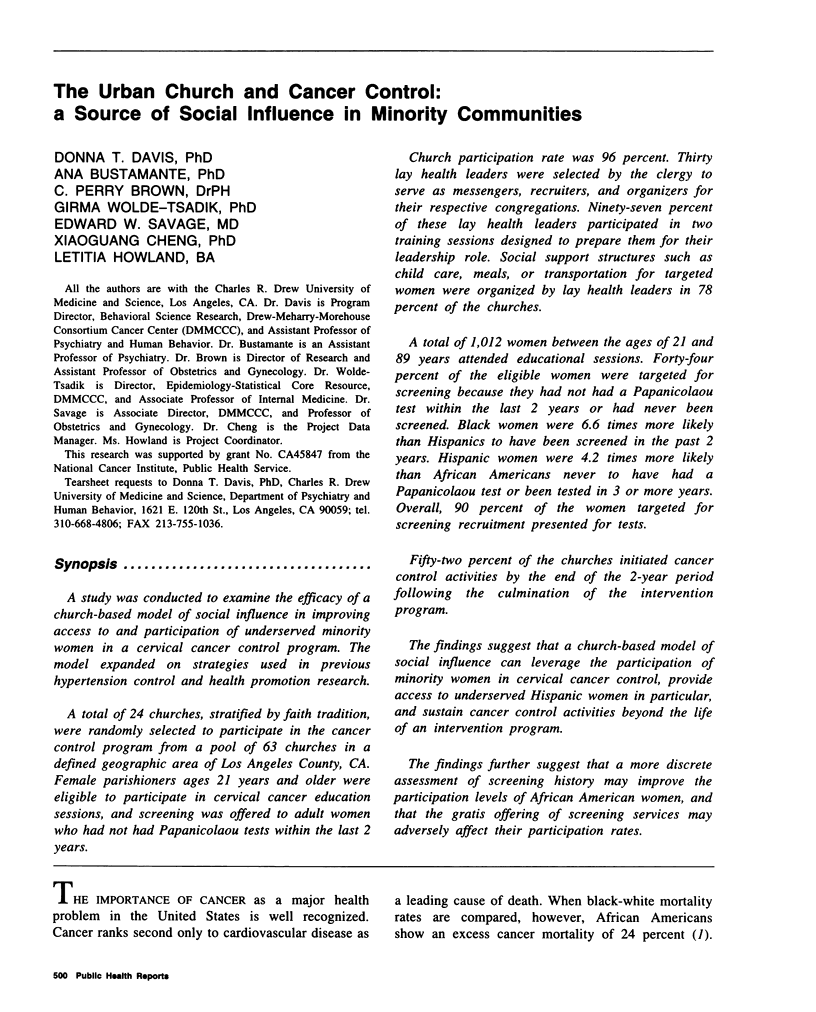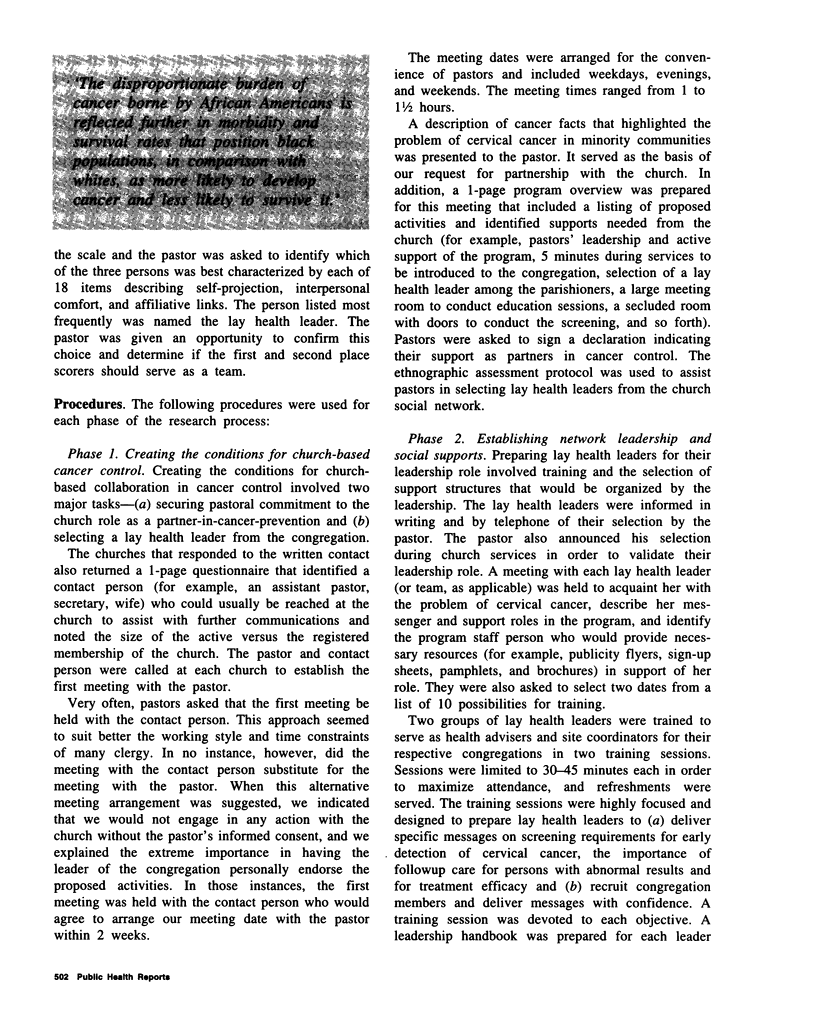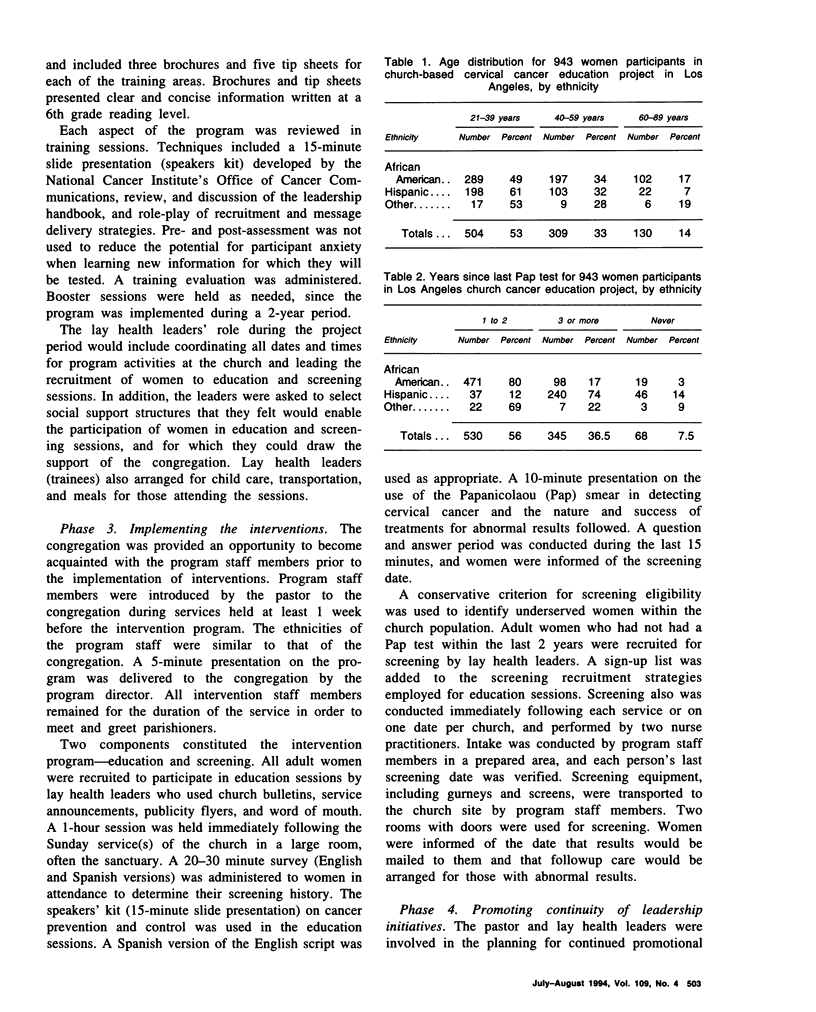Abstract
A study was conducted to examine the efficacy of a church-based model of social influence in improving access to and participation of underserved minority women in a cervical cancer control program. The model expanded on strategies used in previous hypertension control and health promotion research. A total of 24 churches, stratified by faith tradition, were randomly selected to participate in the cancer control program from a pool of 63 churches in a defined geographic area of Los Angeles County, CA. Female parishioners ages 21 years and older were eligible to participate in cervical cancer education sessions, and screening was offered to adult women who had not had Papanicolaou tests within the last 2 years. Church participation rate was 96 percent. Thirty lay health leaders were selected by the clergy to serve as messengers, recruiters, and organizers for their respective congregations. Ninety-seven percent of these lay health leaders participated in two training sessions designed to prepare them for their leadership role. Social support structures such as child care, meals, or transportation for targeted women were organized by lay health leaders in 78 percent of the churches. A total of 1,012 women between the ages of 21 and 89 years attended educational sessions. Forty-four percent of the eligible women were targeted for screening because they had not had a Papanicolaou test within the last 2 years or had never been screened. Black women were 6.6 times more likely than Hispanics to have been screened in the past 2 years.(ABSTRACT TRUNCATED AT 250 WORDS)
Full text
PDF






Selected References
These references are in PubMed. This may not be the complete list of references from this article.
- Eng E., Hatch J., Callan A. Institutionalizing social support through the church and into the community. Health Educ Q. 1985 Spring;12(1):81–92. doi: 10.1177/109019818501200107. [DOI] [PubMed] [Google Scholar]
- Hatch J. W., Cunningham A. C., Woods W. W., Snipes F. C. The Fitness Through Churches project: description of a community-based cardiovascular health promotion intervention. Hygie. 1986 Sep;5(3):9–12. [PubMed] [Google Scholar]
- Hatch J. W. Outreach in Chatham County. N C Med J. 1987 Dec;48(12):633–635. [PubMed] [Google Scholar]
- Lacey L. P., Phillips C. W., Ansell D., Whitman S., Ebie N., Chen E. An urban community-based cancer prevention screening and health education intervention in Chicago. Public Health Rep. 1989 Nov-Dec;104(6):536–541. [PMC free article] [PubMed] [Google Scholar]
- Levin J. S. The role of the black church in community medicine. J Natl Med Assoc. 1984 May;76(5):477–483. [PMC free article] [PubMed] [Google Scholar]
- Mollica R. F., Streets F. J., Boscarino J., Redlich F. C. A community study of formal pastoral counseling activities of the clergy. Am J Psychiatry. 1986 Mar;143(3):323–328. doi: 10.1176/ajp.143.3.323. [DOI] [PubMed] [Google Scholar]


